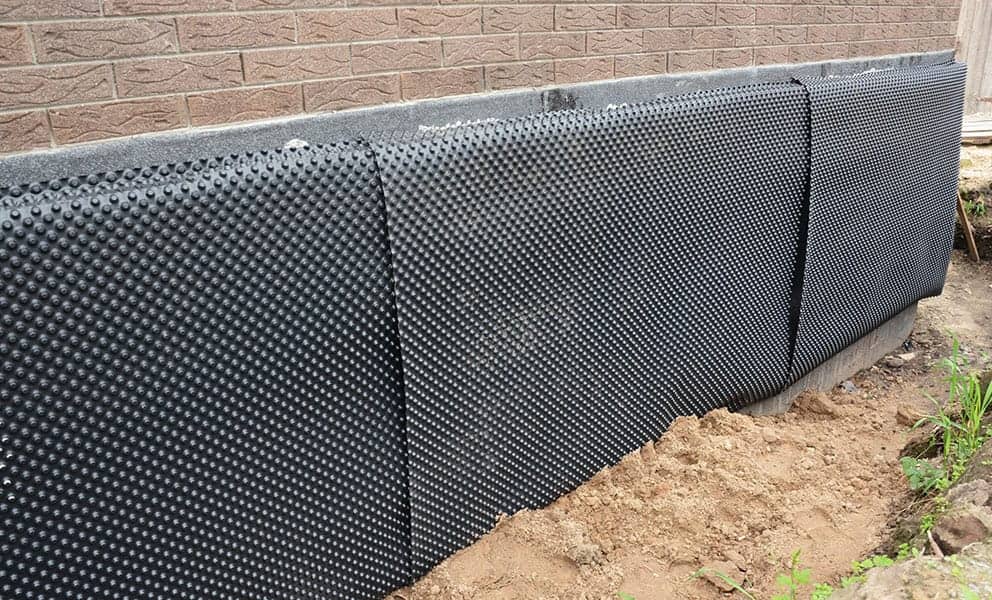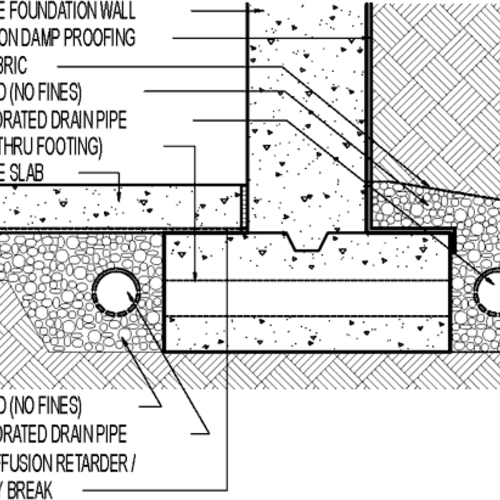Discovering the Various Techniques and Solutions for Effective Damp Proofing
Moisture in buildings postures considerable obstacles to both architectural stability and indoor air quality. Different techniques and remedies have actually emerged to battle this prevalent problem. From typical damp-proof membrane layers to cutting-edge chemical treatments, each approach supplies one-of-a-kind benefits. Comprehending these choices is essential for effective moisture control. Nevertheless, picking the best service depends upon certain structure conditions and requirements, motivating more expedition into the most reliable wet proofing methods available.
Comprehending the Reasons of Moisture
Although wetness can emerge from numerous resources, comprehending these causes is essential for reliable remediation. Typically, dampness originates from 3 primary resources: climbing wet, passing through wet, and condensation. Climbing damp occurs when groundwater takes a trip up-wards with porous products, such as block or rock, usually as a result of a lack of an effective obstacle (mould treatment newcastle). Passing through moist is typically triggered by exterior elements, including roof leaks, malfunctioning gutters, or harmed walls, permitting water to infiltrate a property. Condensation, on the other hand, results from excess moisture airborne, usually intensified by poor ventilation and temperature level distinctions, causing water beads basing on surface areas. Recognizing these underlying problems is necessary, as each sort of moisture calls for a tailored strategy for removal. Proper analysis aids in figuring out the most efficient options, ultimately protecting the architectural integrity of a structure and boosting interior air quality
Traditional Damp-Proof Membrane Layers

Chemical Damp-Proofing Solutions
Chemical damp-proofing remedies use an ingenious strategy to avoid dampness invasion in structures. These methods normally entail the application of liquid chemicals that pass through masonry and develop a barrier against rising damp. Commonly used chemicals include silanes, siloxanes, and various other water-repellent agents that react with surface materials to produce a hydrophobic layer.The application process usually calls for exploration holes right into the wall surfaces, infusing the chemical remedy, and enabling it to treat. This approach is especially beneficial for older structures where conventional damp-proof membrane layers might be not practical. Furthermore, chemical damp-proofing can be much less disruptive and a lot more affordable than extensive remodelling projects.While efficient, these options depend on proper application and environmental conditions for peak performance. Routine maintenance and surveillance are important to guarantee the long life of the damp-proofing treatment. In general, chemical damp-proofing stands for a functional alternative for guarding structures versus moisture-related damages
Cavity Wall Construction Methods
Tooth cavity wall building and construction methods supply various benefits, specifically in moisture control and energy efficiency. By integrating an air space in between 2 layers of stonework, these walls successfully mitigate water ingress while improving insulation. This combination not only secures structures from wetness however likewise contributes to decreased energy intake.
Advantages of Cavity Walls
When taking into consideration effective wet proofing methods, the advantages of cavity wall surfaces stick out prominently. Cavity wall surfaces are composed of two different layers, creating an air gap that successfully lowers moisture infiltration. This design minimizes the threat of wetness, as the outer wall serves as an obstacle against rainfall and water ingress. In addition, cavity wall surfaces improve thermal insulation, which adds to power performance by decreasing heat loss. They also supply sound insulation, aiding to develop a quieter indoor setting. The air space enables for ventilation, which assists in moisture control and lowers the chance of mold and mildew development. These benefits not only improve the overall comfort of a building however also add to its durability and structural honesty.
Moisture Control Strategies
Reliable moisture control techniques are important in tooth cavity wall surface building to assure lasting protection versus moisture. One primary approach includes the consolidation of weep holes, which promote water drainage from the cavity, avoiding accumulation. Additionally, the usage of breathable membranes can help handle dampness levels while enabling trapped vapor to leave. Appropriate positioning of insulation is additionally essential, as it needs to not block water drainage courses. Making sure that the external leaves of the dental caries wall surface are created with waterproof materials enhances overall toughness. Regular maintenance checks are necessary to get more info determine any blockages or damage early, guarding the structure's integrity. Ultimately, a mix of these techniques develops a robust protection against dampness invasion in dental caries walls.
Insulation and Power Effectiveness
Insulation plays a vital duty in improving energy performance within cavity wall construction. By incorporating protecting products, these wall surfaces produce a thermal barrier that lessens warmth loss and lowers power intake. Efficient insulation not just aids keep a steady indoor temperature yet also reduces the risk of dampness, as it avoids condensation within the wall surface dental caries. Various techniques, such as using inflexible foam boards or mineral woollen, can be employed to attain excellent insulation performance. In addition, correct installation is vital to ensure that spaces and gaps are lessened, which can otherwise jeopardize energy performance. Ultimately, a well-insulated dental caries wall surface contributes substantially to total sustainability and reduces heating and air conditioning prices for homeowners.
External Damp Proofing Methods
Outside moist proofing techniques are crucial for safeguarding frameworks from moisture infiltration. 2 reliable methods consist of the application of water-proof membranes and the setup of French drains. These services help mitigate water buildup and protect the honesty of structures.
Waterproof Membrane Application
While various techniques exist for preventing wetness ingress, the application of water-proof membrane layers remains an extremely efficient outside damp proofing method. These membranes are generally made from materials such as polyethylene, rubber, or customized bitumen, offering a durable obstacle versus water penetration. The setup procedure involves using the membrane layer to the exterior surface areas of foundations or wall surfaces, ensuring complete insurance coverage to avoid leaks. Correct bond and securing at joints are crucial to taking full advantage of performance. Water resistant membranes can be used in various kinds, including fluid coatings and sheet membranes, enabling for versatility based upon the specific demands of the framework. This technique not only secures buildings from moisture but additionally improves their durability and architectural stability.
French Drainpipe Installation
One reliable approach for managing groundwater and avoiding wetness build-up around a building's foundation is the installment of a French drain. This drainage system is composed of a trench loaded with gravel and a perforated pipe that reroutes surface area water far from the structure. Proper installment requires careful preparation, making certain that the drain slopes far from the framework to help with excellent water circulation. Additionally, the area of the drainpipe is crucial; it ought to be placed in areas susceptible to pooling or excess dampness. Normal upkeep, including clearing up debris from the gravel and making certain the pipeline continues to be unhampered, is necessary for lasting performance. Inevitably, a well-installed French drainpipe can considerably decrease the risk of water-related issues in cellars and foundations.
Interior Waterproofing Approaches
Interior waterproofing approaches are crucial for protecting a building's interior from moisture infiltration and possible water damages. These methods commonly include the application of customized products and techniques created to develop a dampness barrier within the structure. One usual method is the use of water-proof finishes or sealants on walls and floorings, which prevent moisture from permeating surfaces.Additionally, installing interior drain systems, such as sump pumps, can effectively handle water accumulation in cellars and creep spaces. Another approach includes using vapor barriers, which are set up to inhibit moisture movement from the ground into living spaces.Moreover, resolving any kind of fractures or spaces in wall surfaces or structures with suitable sealants assures an extensive protection versus water intrusion. By carrying out these indoor waterproofing techniques, homeowner can greatly reduce the danger of mold growth, structural damages, and various other moisture-related problems. Correct implementation of these methods is essential for long-term defense and structure honesty.
Routine Upkeep and Inspection Practices
Regular maintenance and inspection techniques are crucial for assuring the long-term effectiveness of wet proofing solutions in any structure. Routine checks allow residential property owners to determine very early signs of moisture breach, such as peeling off paint, mold growth, and stuffy smells. These indicators can indicate underlying issues that need immediate attention.Inspections ought to be carried out at least annually, concentrating on vulnerable locations like cellars, creep rooms, and outside wall surfaces. Throughout these evaluations, homeowner need to take a look at sealers, drain systems, and air flow to verify they function correctly.Additionally, maintaining rain gutters and downspouts is important, as clogged systems can cause water build-up near the foundation. Applying a regular maintenance schedule, in addition to timely fixings, can considerably expand the life-span of wet proofing steps and secure the architectural stability of the structure. Proactive measures inevitably add to the general health and wellness of the living setting.
Regularly Asked Questions
Exactly How Long Does Damp Proofing Normally Last?
The duration of wet proofing performance varies, typically lasting in between 20 to half a century. Factors such as application high quality, environmental conditions, and upkeep methods significantly affect the durability of the damp proofing therapy.

Can I Damp Proof My Home Myself?
The specific considered the usefulness of do it yourself damp proofing. With correct study and the best materials, it is possible. They also identified the relevance of expert support to guarantee lasting effectiveness and protect against future concerns.
What Are the Indicators of Inefficient Damp Proofing?
Indicators of inefficient moist proofing include consistent mildewy odors, noticeable mold and mildew development, peeling paint, damp patches on walls, and timber degeneration - damp removal newcastle. House owners should address these problems immediately to stop further damage and health problems
Does Damp Proofing Affect Indoor Air Top Quality?

Just How Much Does Specialist Damp Proofing Price?
Professional damp proofing costs differ significantly, commonly varying from $1,000 to $5,000 relying on the residential or commercial property's size, the level of the moist issue, and chosen methods. Each scenario calls for a customized assessment for accurate pricing. Frequently, wetness stems from three primary sources: climbing moist, penetrating damp, and condensation. When considering efficient damp proofing methods, the advantages of dental caries walls stand out prominently. Exterior wet proofing methods are crucial for protecting frameworks from dampness infiltration. While various approaches exist for preventing dampness ingress, the application of water resistant membrane layers remains a highly effective outside damp proofing strategy. Signs of ineffective damp proofing consist of persistent musty odors, noticeable mold growth, peeling paint, moist spots on wall surfaces, and timber degeneration.